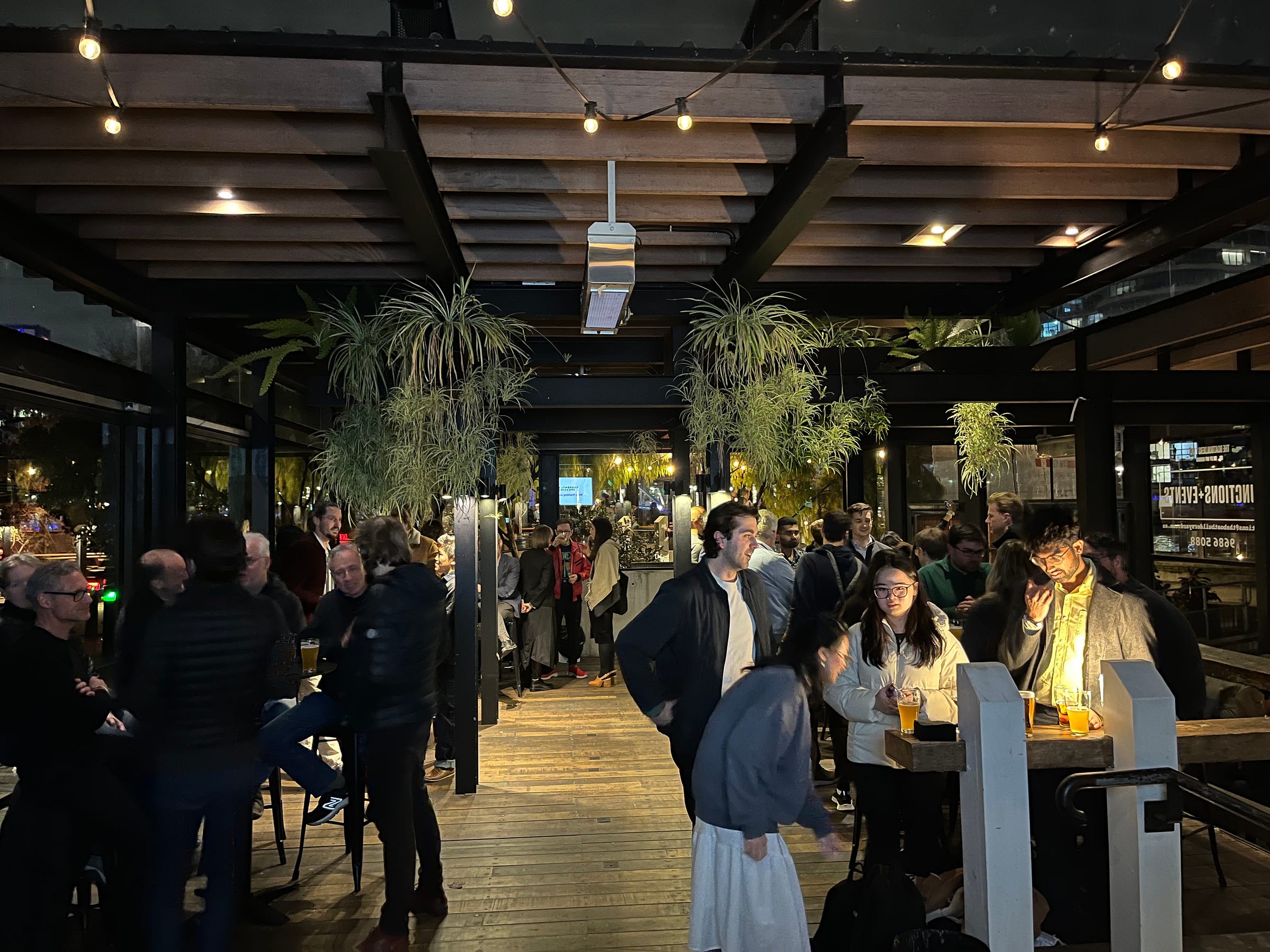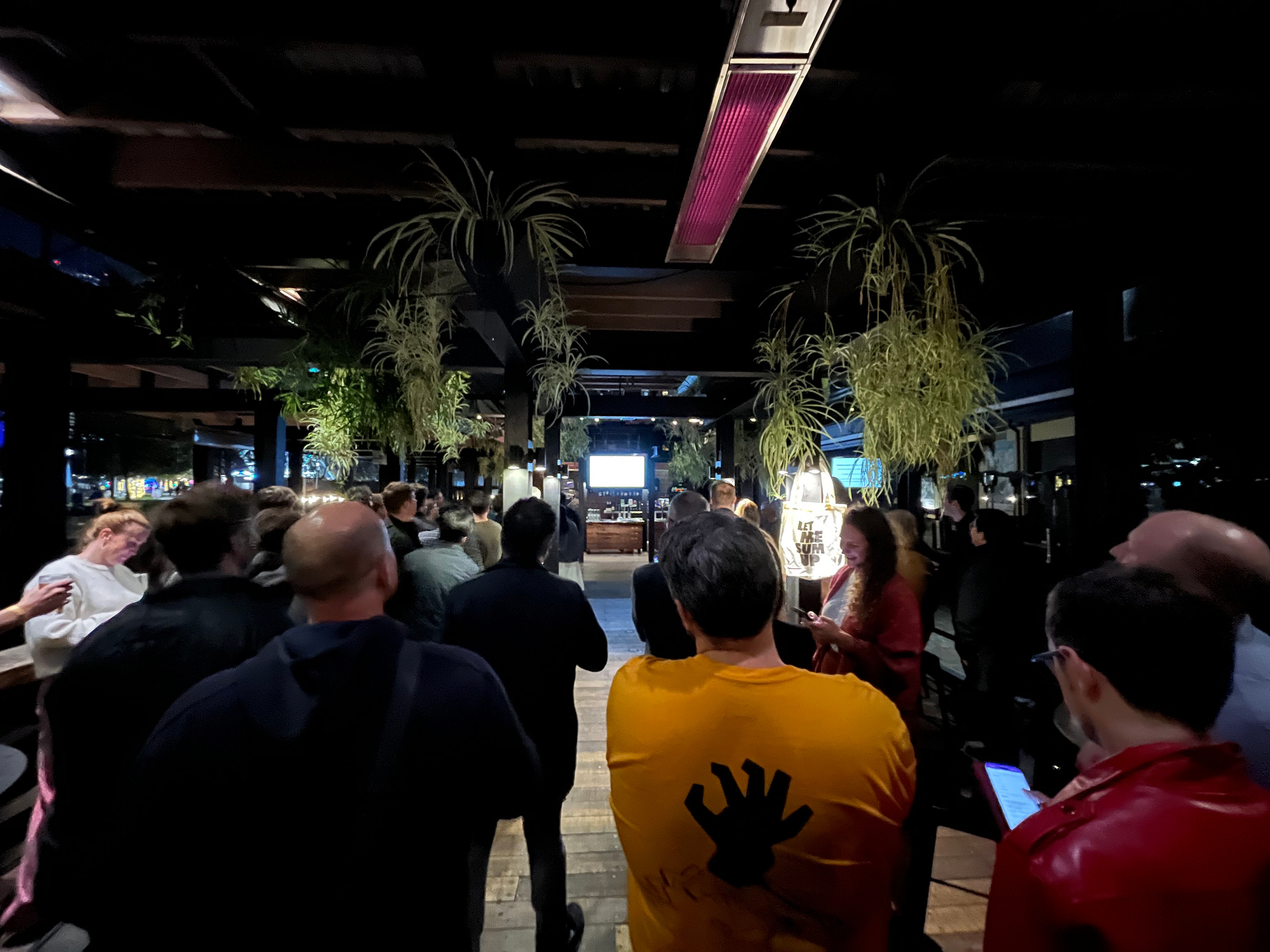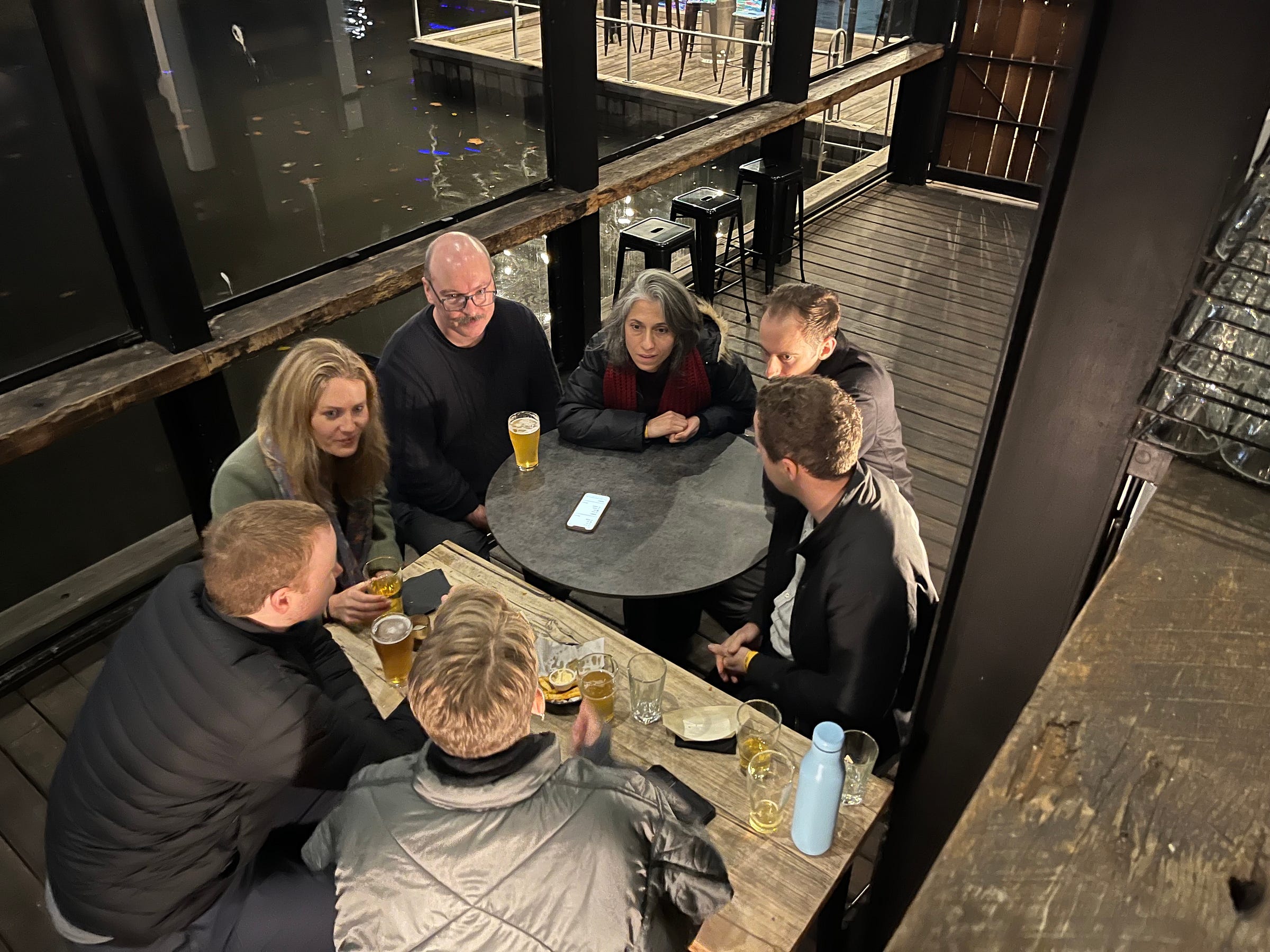Short Circuits #10
Trivia wrap, quadzilla, a smelly and ignomious start to life, Melbourne's CBD substations and a celebrity hot water endorsement!
Trivia Wrap
ICYMI we held our second trivia event back in June. Nearly 100 people braved the Melbourne winter evening to go head to head against a room of energy professionals answering questions like:
Which of these music genres is the most energetic? A. Math rock, B. Nintendocore, C. Splittercore, D. Yacht Rock1
It was nerdy. It was rowdy. It was extremely fun. And we raised $500 for the First Nations Clean Energy Network.
A massive thank you to everyone that came out! We’ll hopefully do something again around the All Energy conference in Melbourne in October.
Making toast
The video below is a decade old now, but it’s well worth a watch; even if you’ve seen it before.
Robert Förstemann, an Olympic and world champion track cyclist with cartoonishly massive quads, jumps on a bike to power a toaster. Sounds simple enough, right? The toaster is a 700 W unit, which is a minuscule value in terms of any modern power system, but is a big number if you’re familiar with elite cycling power output.
He huffs and puffs away at 700 W and after producing a total of 0.021 kWh of energy, collapses in exhaustion.2 The toast could barely be described as threeeee, medium brown.
The Toaster Challenge actually did three videos in the series — they also pitched Swedish Olympic rower Lassi Karonen and Swedish Olympic cross-country skier Ida Ingemarsdotter against the toaster. These elite athletes managed 0.01 kWh and 0.0058 kWh, respectively.
It’s a stark reminder that we use a lot of energy in our daily lives with little to no thought. Toasting a piece of bread requires a literal Olympic-level of athleticism.
Now what I’d really like to see is a video series of regular people thrown against the ramparts of the toaster, and judges assessing the various shades of white and measuring the accumulated puddles of sweat.
Hydrocarbon Farts
Cast your mind back to 2021, when the federal energy minister Angus Taylor’s campaign of bullying pestering AGL’s then CEO Brett Redman into reversing course on the decision to close Liddell power station in 2023 culminated in the fed’s decision to build a couple of new gas peakers.
Kurri Kurri – officially known as the Hunter Power Project – is a pair of open cycle gas turbines with a capacity of 660 MW.3 The commissioning date was originally intended to be prior to Liddell’s closure, but *gasp* they blew past that (and over budget) and commissioning is only just occurring now.
The fed’s vague concession to *waves hand* climate change or whatever was that Kurri Kurri would be capable of running on hydrogen. Snowy Hydro’s page still suggests the turbines are “hydrogen-ready” 🤷♂️
I think this makes it extra funny that when Kurri Kurri finally got to commissioning in July 2025 it was running on neither hydrogen or natural gas but diesel. It’s dual fuel alright, just not the fuel that was promised.
Anyway the commissioning tests on diesel did not go so well – a visible plume of smelly gas was released into the air, triggering widespread complaints to the EPA and the local federal MP.
Testing was paused, and recommenced last week on gas, which should be less smelly than the diesel. Presumably at some point Snowy will have to come back and complete commissioning tests on diesel, and there’s a high degree of scrutiny on the units now.
Anyway the most shocking thing I learned from this whole saga was that the local federal MP for the seat of Hunter, Dan Repacholi, a former Olympian and very very big man (6’8” and 120kg according to Wiki) did not represent his country in Basketball.4
He’s a former Olympic and Commonwealth) sport shooter.
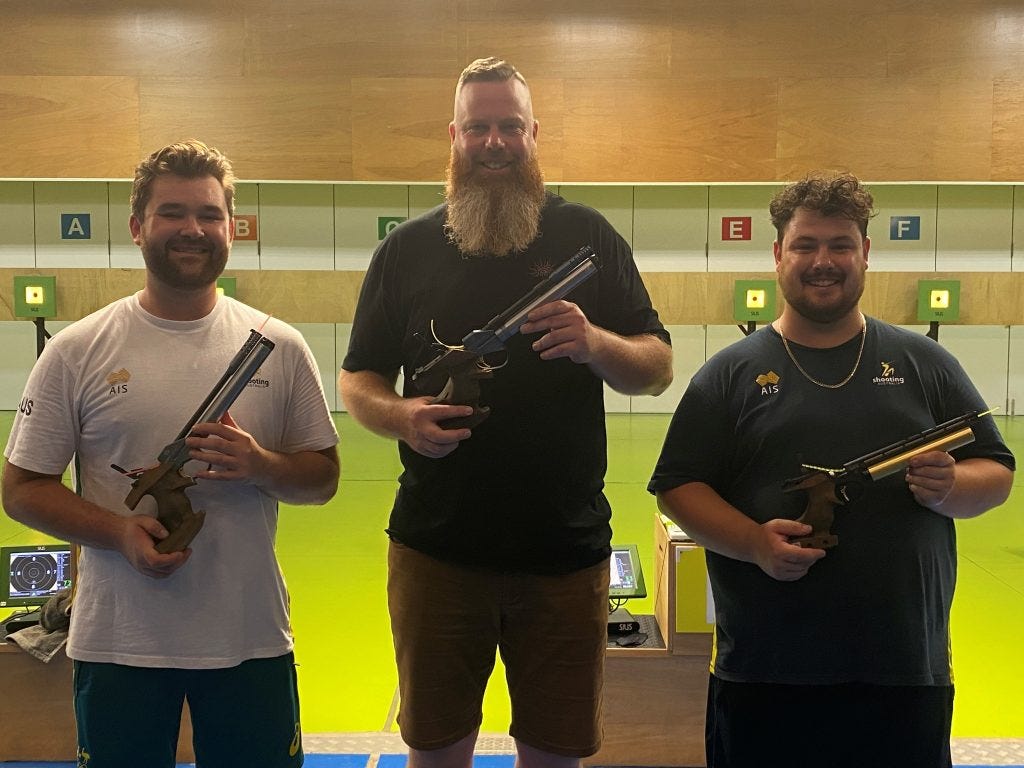
A Brief History of Melbourne’s Electricity Supply
The I Take Pictures of Power Systems (closed) group on Facebook continues to deliver some fantastic gems. Chris, a linesman with Citipower and Powercor, regularly posts interesting stuff, like this brief history of the electricity supply to Melbourne’s CBD.
1880 – A firm named “Victorian Electric co” was granted permission for an experiment to light up Elizabeth street in the CBD with 16 arc lights powered via a DC generator on Yarra Bank.
1894 – Gas shortages leads to Melbourne City council favouring electricity for street lighting. This was supplied via the Spencer St power station at 3000V DC, with 50 arc lights operating in series per circuit. The station comprised of a 250HP boiler with a 300HP engine.
1895 – Two private companies started supplying electricity in the region to businesses via two power stations (Burnley and Richmond) distributing supply via 2000V AC single phase 72Hz. Each customer that wanted supply had a 2000V/100V transformer installed on their premises.
1898 – Melbourne city council under its rights obtained the two private companies supplying electricity in the area, to become the sole supplier.
1913 – Three phase alternators begun being installed in the main power houses, DC load on the system peaked around 23MW, but gradually reduced as areas were transitioned to AC.
1920 – Three phase area substations running at 6.6kV/400V begun commissioning, with the 6.6kV being fed from Spencer St power station (Substation J switch room).
1923 – Substation J (adjacent to Spencer St PS) became an import substation, taking 22kV supply from the state grid to distribute throughout the inner Melbourne area at 6.6kV. The CBD is tied to the grid.
1928 – Metro-Vickers open type switchgear 6.6kV gradually replaced with new oil immersed Reyrolle 6.6kV switchgear from the UK.
1930 – Spencer street PS progressively became a peak load facility, with Substation J supplying base load throughout the CBD via its 22kV links to the state grid.
1934 – Disaster strikes, one of the Reyrolle breakers explodes, causing a partial meltdown in the CBD. Similar issues were reported in the UK with this gear, the cause being the build up deposit of a substance causing tracking. Porcelain insulators were later used to prevent this.
1935 – Load throughout the CBD region was peaking around 33MW, mainly supplied via three phase 6.6kV, DC distribution load was around 10MW.
1937 – Second import supply substation established in the CBD being W zone substation with two 10MVA 22kV/6.6kV transformers.
1960’s – Consideration was now given to 11kV distribution over the current 6.6kV.
1964 – The first 66kV zone substation is commissioned in the CBD, being WA (still in service now). Built with two 66/11kV transformers and one 66/6.6kV transformer.
1970 – DC distribution ends in the CBD, with customers required to install rectifiers for their old equipment.
1980’s – Numerous 66kV zone substations supply the bulk of load in the CBD. The older 22kV transmission network is gradually being de-loaded. Spencer street PS was closed in 1982 making the CBD fully dependant on external generation via 66kV sub-transmission.
2022 – The last of the 6.6kV distribution network is converted to 11kV. Some small load is still supplied via the 22kV transmission network (metro’s rail system).
Today – The CBD has become the load centre of the state, averaging demand at 600-900MW. There are around 250 feeders running at 11kV, fed via 14 zone substations.
I’ve attached photos of some of the original area substations from the 1920’s, which still exists today though housing modern equipment. And also Substation J and its control room which formed an important point in history for power in the CBD region.
Chris has a collection of photos attached to the original post, including the inside of some brand new subs, but a couple pictures caught my eye:
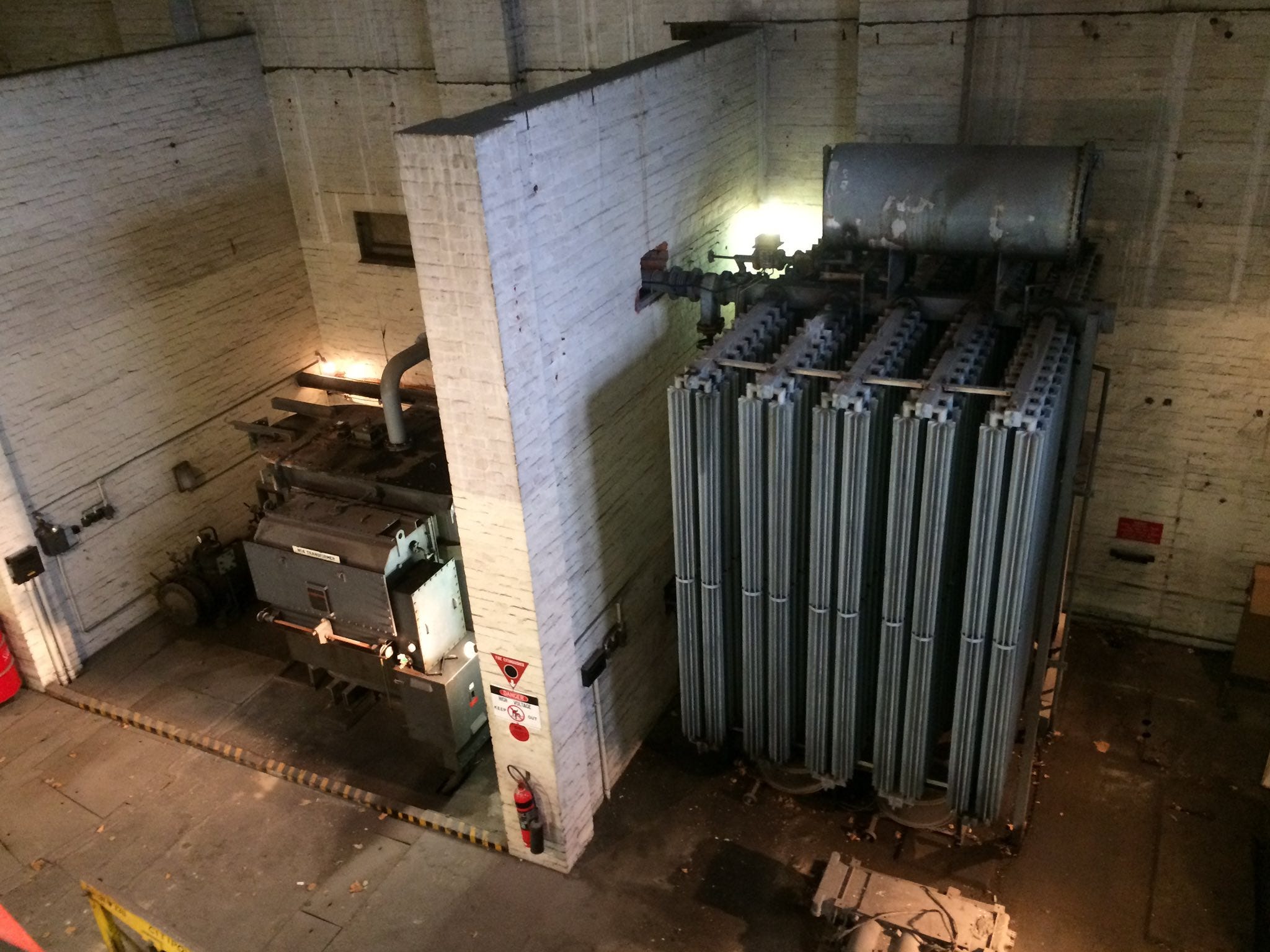
If this floats your boat, let us rattle the tin once more so that we can unearth some buried treasures 🙃
Celebrity Endorsements
Let’s say it’s the late 1980s and you’re working in the marketing department of the State Electricity Commission of Victoria. Cheap gas from the Bass Strait has yielded an advantage to your nemesis and fellow government monopoly utility the Gas and Fuel Corporation of Victoria. Despite previous initiatives like Gold Medallion homes, something like 80% of Victorian homes have a reticulated gas connection, using the fuel for cooking, heating and hot water.
Time to bust out the celebrity endorsement! And who better than one of the kings of the Australian entertainment industry, Bert Newton (RIP)!
I stumbled across this 1987 SEC advertorial brochure for New Dimension electric water heaters. Please don’t ask me how I stumbled across it, but you could own a piece of history at the intersection of the Australian entertainment and electricity supply industries for only $35 on eBay.
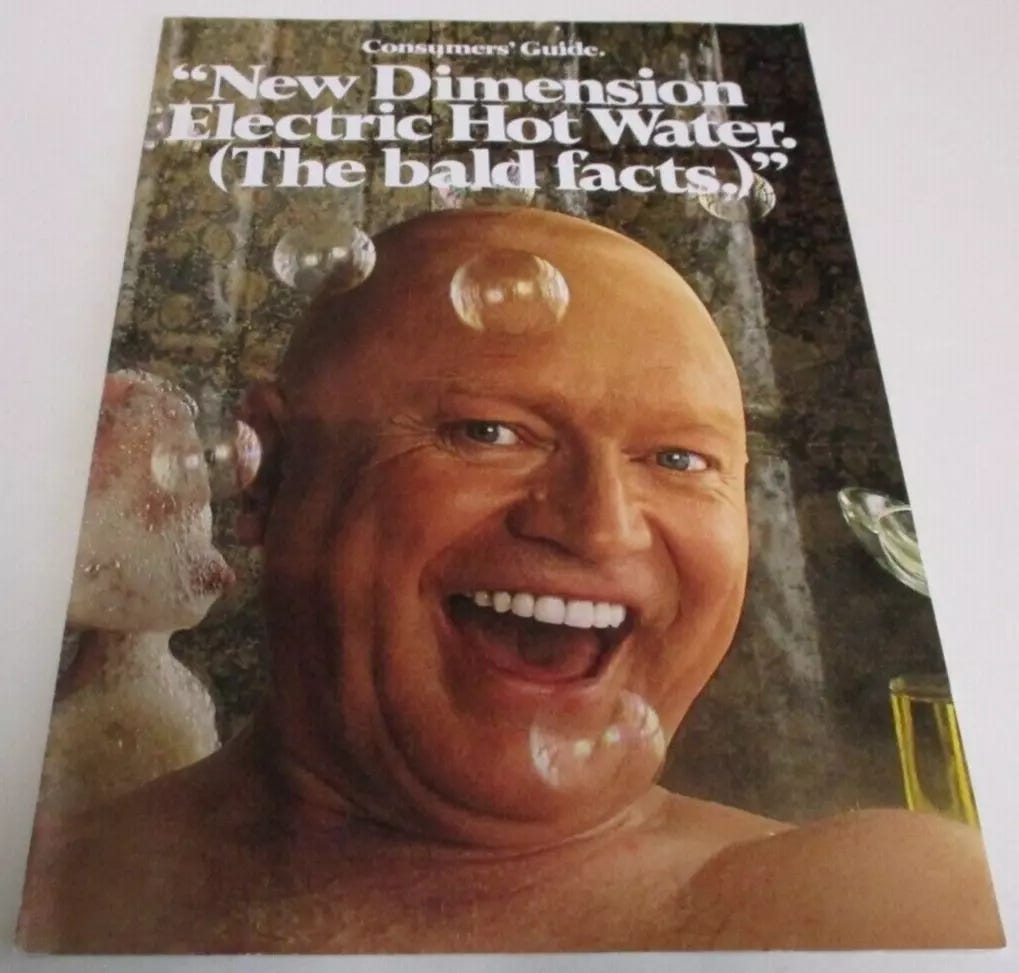
Being an energy professional was in no way helpful for this particularly question and the answer is of course splittercore. Not for the faint of heart here is a playlist featuring such soothing songs as Viper Attack, Anguish 666 BPM and Bastard Shit from Hell. I accept no liability for your health or well being if you choose to click the link below.
The video depicts Robert cycling for a minute, but presumably they had the bike on ERG mode at a fixed 700 W and he actually cycled for 1 minute, 48 seconds to produce that 0.021 kWh. Otherwise the maths doesn’t quite math.
The power station is built on the site of the former Kurri Kurri aluminium smelter.
The May 2025 election saw Matt Smith, another Labor pollie and former sportsman, win Warren Entsch’s old seat of Leichardt in Far North Queensland. At 6’10” Smith took Repacholi’s crown of tallest federal politician. And yes, Smith was actually a basketballer.




